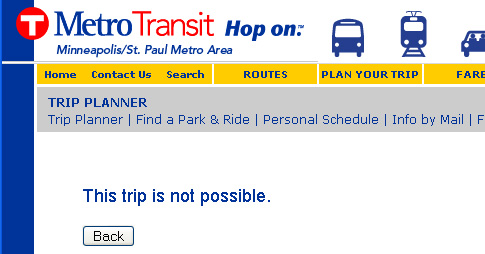
A reader — Lee — writes about the transportation bill:
Why is the press covering this as only a “Tax Increase” story? Why isn’t MPR/Local Papers/etc talking about the bill as a complete package? We need a bit more of the fair and balanced news (sorry I couldn’t resist). We need a story about the details of what it does and why its really a GOOD thing. Oddly I couldn’t find a single story on MPR website detailing the bill.” (Read more)
Lee is right about it being a tax increase story. That’s the way most media has played it. I notice today that that’s the way the Star Tribune played it with a breakdown of how much it’s going to cost you (or not), and a look at the MPR coverage of the political process shows a focus on the politics with a side of dueling political philosophies, mostly.
That’s not necessarily a sin. Why? Because we know the numbers — it’s a revenue bill afterall — we just don’t know the specifics until whoever is in charge gets around to spending the money.
And so we’re left with terms like “highway maintenance,” in stories. That’s encouraging, certainly, because who among us wants to fall into a pothole on the way home today? But what does a term like that actually mean? Does it mean a bridge won’t fall down or an extra lane will be added? And if so, when? And where?
The bill provides $41 million for infrastructure operations and maintenance. What does that mean to you and me? The bill doesn’t say. It includes $34 million for “infrastructure investment support,” but what does that mean? Part of it — $200,000 — is for the Hubert Humphrey Institute of Public Affairs to participate in the U.S. Department of Transportation Urban Partnership program.
We know it appropriates $125 million over the next two years to put up the new I-35W bridge. When they were debating this bill last year, the bridge hadn’t fallen yet, so $125 million gets us back — maybe — to where we were a year ago.
The Met Council gets $400,000, the Department of Administration gets $18 million and the Department of Finance gets almost $1.9 million, but that doesn’t mean I’ll be able to get a bus out of Woodbury (a city of 60,000) to St. Paul by 9:20 in the morning. The graphic above tells me that’s not possible.
$40 million is earmarked for the construction of interchanges that promote economic development and, presumably, jobs. Does that mean getting another SuperAmerica in town? Or a high-tech company with lots of jobs? We don’t know. Nobody does.
We do know there’ll be a toll lane on I-35W from Minneapolis south. I guess we can thank former Rep. Mark Kennedy for that. He’s the guy who pushed toll lanes. If the gas tax is the difference between people keeping or losing their homes — as some of the rhetoric suggests — what are the odds of folks paying to drive in the toll lane?
Chaska, Rochester Maple Grove, and Mankato will get new garages for MnDOT trucks, and we know there’s $50 million for local bridge replacement and rehabilitation. $50 million? Will that make a big difference across the state? The new I-35W bridge will cost $195 million.
$18 million is going to pay to fix up the exterior of the State Transportation Building. Will that mean anything to the state’s transportation problems? Not unless there’s a danger of a wall collapsing and closing the I-94 on-ramp.
And that’s pretty much the bill in terms of the “what for” part — 14 pages of the 40 page bill; the rest is mostly how the state will get the money and general ideas of how it will be used. It will create a “strategic management and operations advisory task force” to help decide such things.
So that’s why it’s difficult to say precisely what the net good will be. That’s not to say there won’t be some net good, but until the people we’re supposed to trust start spending it — and really until we even know who those people are — it’s mostly guesswork.
Wake me when the bus from Woodbury pulls in.
